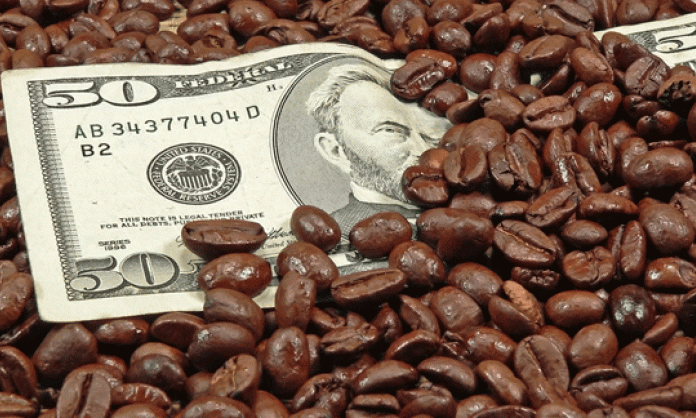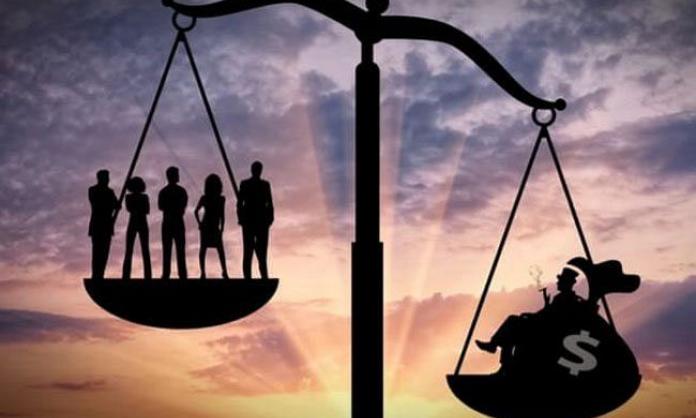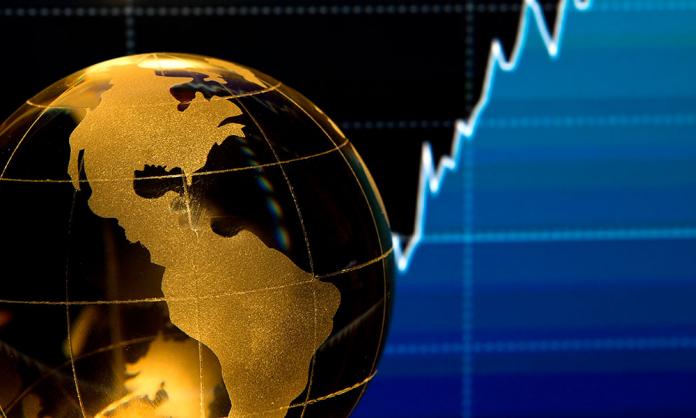Coffee’s roots lie in the Islamic world, but it was European capitalism that created a global addiction. “[U]ntil the mid-seventeenth century, most people in England were either slightly – or very – drunk all of the time”, writes historian Matthew Green. “Drink London’s fetid river water at your own peril; most people wisely favoured watered-down ale or beer. The arrival of coffee … triggered a dawn of sobriety.”
It may have been true of much of Europe. That didn’t make the importation of the bean necessarily welcomed by the upper classes. Defending tradition, and wine, French doctors protested in 1674 that the coffee drinker “suffers delusions, and the body receives such a shock that it is as though it were bewitched”. A century later in Prussia, Frederick the Great condemned as “disgusting” the increase in local coffee consumption. “My people must drink beer. His Majesty was brought up on beer, and so were his ancestors, and his officers.”
It wasn’t sobriety itself that the elites were afraid of. The brew was said to promote rational thought. According to novelist and playwright Honore Balzac, “Coffee falls into your stomach, and straightaway there is a general commotion. Ideas begin to move like the battalions of a grand army of the battlefield … Things remembered arrive at full gallops, ensuing to the wind … the artillery of logic hurry up with their train and ammunition, the shafts of which start up like sharpshooters.”
A seditious bean
Coffee was not simply a drink. It became an institution. The first coffee houses were established in the mid-17th century. Particularly in London, they rapidly proliferated. Charles II attempted to ban them in 1675 because they were considered “seminaries of sedition”. He wasn’t necessarily wrong. Many houses established a reputation as centres for debate and learning and often fostered a democratic atmosphere at odds with aristocratic privilege – at least for those who could manage the 1 penny entrance fee that kept the labouring classes out. The anti-establishment spirit is captured in the rules and orders of one 17th century outlet:
Anthony Wild, author of Dark History, a gripping narrative of the origins and development of the commodity, writes that the secret ballot “re-emerged in the [republican] ‘Coffee Club of Rota’ … [W]hen a member wished to sound out the meeting’s view of the subject under discussion, he could call for the ‘wooden oracle’ [i.e. the ballot box] to be consulted.”
Paris’ Cafe le Procope was frequented by Voltaire, Rousseau and Diderot. Later it was a meeting place variously for Robespierre, Danton and Marat. During the French Revolution, the Phrygian cap, symbol of liberty and headwear of the sans-culottes, was reportedly first displayed at the cafe.
It would be a stretch to locate in coffee the seeds of the new capitalist order that emerged in Europe. But the relations bound up with the production and consumption of coffee were the quintessence of capitalism; the commodity became deeply embedded in the culture and commerce of the time. “The stock exchange, insurance industry, and auctioneering”, writes Green, “all burst into life in 17th-century coffeehouses – in Jonathan’s, Lloyd’s, and Garraway’s – spawning the credit, security, and markets that facilitated the dramatic expansion of Britain’s network of global trade in Asia, Africa and America.”
The great transformation that followed wasn’t simply the triumph of liberty and reason over serfdom and superstition, let alone sobriety over intoxication. Nor did it represent the birth of genuine equality. Far from it. The democratic pretensions of the rising bourgeoisie were a facade of a regime of oppression and exploitation that would engulf the world – as would the drink they sipped as plans were hatched for commercial dominance.
New worlds, exotic markets
Colonial expansion created an era of plantation cropping and rampant pillage of all corners of the globe. In the Congo the Belgians presided over a reign of terror to secure rubber exports. In the Philippines hemp became dominant. But coffee, sugar, tea and tobacco would be the king crops – sourced from Asia, Africa and the Americas and laboured on by indentured Scots and Irish, West African slaves, newly dispossessed indigenous farmers and the poorest of the working class.
The Dutch East India Company established forced labour coffee cultivation in Java (Indonesia) in the 1690s. Over time, much of the archipelago was turned to plantation farming, to the detriment of subsistence agriculture. The economy and the entire social structure were transformed. The resulting famines and misery were replicated wherever the bean was cultivated.
In the 1700s, the centre of world production shifted to the slave-rich Caribbean. The French colony of Saint Domingue (Haiti) was the world’s largest producer until one of the greatest revolts in history. In 1791, almost half a million slaves ripped the plants from the ground, burned the plantations and drove the French from the island. Brazil then became the dominant producer in the 1800s, importing 1.5 million slaves from West Africa to work the farms.
Coffee by now was becoming one of the world’s most widely traded commodities. But the greater the riches amassed in trading house safes and European government treasuries, the poorer and more degraded the colonised world became.
As in other markets, trading became more complex as capitalism expanded. Some of the early appearances of derivative contracts – used to such destructive effect in the recent North Atlantic financial crisis – were in the coffee market. With the rise of these “securities” in the 1800s, the wealthy didn’t have to possess the beans to make money from them. In 1880, with the world harvest totalling fewer than 7 million bags, 61 million bags were reportedly bought and sold on the Hamburg futures market.
Trade was still based on the promise of something tangible. The original “forward contracts” were simply designed to give price certainty. For example, a coffee roasting company agreed to pay a coffee grower $10 a bag in six months’ time. The market price at that later time would likely be different to that specified in the contract, but it at least provided “peace of mind”. The futures market, however, became a gamblers’ den.
The logic of speculation goes something like this. Trader X makes a contract to pay Grower Y $10 per bag at a future date. Assume that the current price is also $10. The trader gambles on a price movement of, say, 0.2 percent (to $10.02) in the intervening period. S/he then sells the contract for $10.01 to Trader Z. Trader Z now tries the same play with a different starting price. A 1 cent return sounds like the prize for a fruitless endeavour. But if the contract is for 1 million bags, then a $10,000 profit results from this minuscule price movement. If the price rises 2 percent, the profit could be $100,000 or more.
By the 21st century, upwards of 2 billion bags per year were being traded despite actual harvests of around 110 million bags. With these markets, obviously, there are substantial risks. If the price moves in the wrong direction, large losses can accrue, sparking a sell-off as traders attempt to rid themselves of contracts. That can result in a collapse. Growers without a price locked in can be hit hard.
Even those with a contract to sell might find their buyer, whoever that now is, unable to pay. That’s because speculators are often not in possession of the money required to fulfil a contract – the expectation is that they will sell it before the due date. So to trade the contract requires only a fraction of the money needed for the final settlement. If they get stuck with the contract after the price has dropped significantly, then the game is up. In that regard, the speculative movement resembles musical chairs as much as a casino.
Fair trade fraud
It is the perverse logic of capitalism that the promise of a bean can destroy the livelihoods of millions. No one knows that better than the 25 million peasants and workers involved in growing coffee across the world. Low prices and high volatility characterise the coffee market in which underdeveloped world producers sell their beans. Many can expect less than $3 per day.
The last, and biggest, crisis in the industry was just over a decade ago. A market glut pushed prices so low that in Central America alone around 600,000 jobs were lost. Millions more were affected. One attempt to improve the situation for producers is the multi-billion dollar “fair trade” industry. Fair trade involves Western NGOs and corporations guaranteeing farmers a minimum price on those occasions when the floor falls out of the market. It might sound good. There is, however, a major problem with this fashionable industry.
“The fact that Fair Trade has achieved a significant impact in some regions of the world is undeniable”, writes Ndongo Samba Sylla, a former employee of Fairtrade International and author of The fair trade scandal: marketing poverty to benefit the rich. “But isolated and limited successful experiences are insufficient to argue that this tool has been effective …
“Fair Trade is a logical continuation of free trade and not a remedy to its weaknesses. The reason for this is quite simple. Can the excesses of the market economy be overcome using the same principles and methods? Can the grip of the free market on human lives actually be loosened while still promoting further trade, albeit in innovative ways? The answer is most certainly no.”
Capitalist trade can never be fair because it is based on an established inequality of resources. On one hand this is about large multinational companies like Nestle dominating the system to get the cheapest price possible.
Fundamentally, however, the poor deal for coffee growers is the result of the anarchic way that production is carried out. The growers – whether small farmers, cooperatives or agribusiness – compete for market share. All capitalist industries produce goods only with the expectation, or the gamble, that they will be sold. There is always some degree of speculation involved. That makes for an unstable and crisis-prone system. When the going seems good, capacity is expanded, creating greater output, driving down prices and some out of business. That’s what happened in the last crisis.
Further, the “developing world producers” narrative that often dominates discussions of coffee is only one part of the story. Production isn’t always carried out by a small farmer. In places such as Guatemala, for example, a landed elite controls most of the plantations. Coffee pickers, migrant workers and farm workers are, like most employees, often left out of the picture – that’s also true of the fair trade industry, which focuses on building a business model, not on equality for the labouring classes.
In Peru there are 200,000 predominantly small farms. But the conditions are no better for the labourers working for a small producer. Eduardo Montauban, head of the Peruvian Coffee Chamber, told the Financial Times in 2006, “No one in the industry is paying minimum wage. It’s simply not feasible.” That may have been a slight exaggeration, but of five Fairtrade-certified farms that journalist Hal Weitzman visited in the country, casual labourers were being paid below the national minimum wage in four. That’s the logic of capitalist competition. There’s nothing fair about it.
High, but not on life
Just as the stereotype of the small farmer papers over class divisions in the “developing world”, so too the undifferentiated image of the Western consumer masks the class nature of the so-called developed societies.
As the 1 penny coffee house entry fee earlier indicated, liberty and democracy in practice excluded the labouring classes. Working class men did not get the vote until the 19th or 20th century, depending on the country. The Jacobin constitution of revolutionary France included universal suffrage, but in practice it wasn’t implemented. Universal suffrage was not won prior to the 20th century in any capitalist democracy.
As the European economy rapidly expanded in the 1800s, it required pliant and disciplined wage workers capable of performing repetitive tasks over extended periods of time. This profit-driven industrial production destroyed the workforce. The individual worker, wrote Karl Marx and Friedrich Engels, “becomes an appendage of the machine, and it is only the most simple, most monotonous, and most easily acquired knack, that is required of him”. It is hardly surprising that stimulants became staples throughout the workday.
In Britain, coffee was displaced by tea. But central was the combination of caffeine and sugar, which enabled work intensity to be maintained and quelled hunger pangs in otherwise empty stomachs. In the rising industrial powerhouse of the United States, where the 1773 Boston Tea Party rebellion (planned in the Green Dragon coffee house) had been an opening salvo in what became the American Revolution, coffee was promoted as an alternative to British Empire-sourced teas.
“Coffee is perfect for those who work on a production line”, writes Morton Satin, former director of the United Nations Food and Agriculture Organization’s Global Agriculture Program. By the 20th century, it “was often supplied freely or at subsidised rates – all with the goal of keeping employees working at high outputs through their long shifts – and on into overtime whenever necessary. How could anybody complain about free or cheap coffee?
“It was not long before coffee became the national beverage that accompanied nearly everyone throughout the day … This was the case whether you were a New York government employee, a West Coast fisherman, a worker in a Chicago packing house, or a cowboy driving cattle a thousand miles to the railhead.”
The corollary of competitive mass industrial production was the industrial slaughter of imperialism. Wild notes of the Second World War, “[T]he combination of intense wartime factory production and the fighting itself made caffeine a vital chemical ingredient of the war effort. If there is any truth in the idea that capitalism depends on caffeine because it lengthens the productive day to a theoretical twenty-four hours, then the war provided further proof … [T]he instant [coffee] manufacturers found that literally everything they could produce was requisitioned by the army.”
Caffeine consumption had dramatically increased in the 19th century. By 1933 coffee was one of the most advertised products in the country. But war truly made coffee a mass commodity, keeping the working classes wide-eyed as they were sent to the slaughter.
Today coffee is so integrated into working life, and so many people have come to depend on a caffeine hit to get going in the morning or continue in the afternoon, that in most workplaces it is expected to be provided. Where many bosses now refuse, it isn’t so much that the drink isn’t valued, but that they know their workers, if they have no other option, will pay out of their own pockets – if not for coffee, then for some other caffeinated or high sugar drink to provide the needed “kick”.
Coffee and capitalism
Starbucks is today’s corporate descendent of the democratic elites and coffee houses of yesteryear. The company began with a single Seattle outlet in 1971, but now boasts almost 20,000 stores worldwide. It publicly promotes “ethical trading and responsible growing practices” and even partnered with the British left-liberal newspaper Guardian to run advertising heavily disguised as a feature series under the guise “A guide to ethical living”. The company obviously ticks all the right boxes to be considered “socially responsible” – it promotes “sustainable” growing and “fair” trade, and CEO Howard Schultz advocates same sex marriage rights.
But while Schultz is paid $9,637 per hour, the average worker in his 120,000-strong US workforce earns $8.79, according to research by finance website NerdWallet. That’s $350 for a 40-hour week. Aimee Groth, who was employed at a New York Starbucks in 2011, related for Business Insider the working conditions at the outlet: “The intensity of what goes on behind the counter is simply not visible from the customer’s point of view. During the peak morning hours, we’d work through around 110 people every half hour with seven employees on the floor …
“We got two 10-minute breaks and one unpaid 30-minute break for every 8 hours on the floor, where we’d have to decide between running next door to use the restroom (because ours always had a line of customers in front of it), quickly eating a bag lunch (there was never time to stand in line and buy something from the store), or making a cell phone call. If you’re lucky, you got to sit down on the one chair in the break room, or on the ladder, because there were never any open seats in the store … On more than one occasion I walked into the break room to see someone crying.”
Such is the modern grind of a wage worker that, with mass unemployment still afflicting the Western world, they are expected to consider themselves lucky to have such a job. The story of coffee, however, is not just about one or two examples of indecency. Nor is it simply about the failings of individual firms or the greed of individual traders or CEOs. The coffee industry provides a prism through which the nature of all industry under capitalism is on display. It is a bitter drink indeed.








